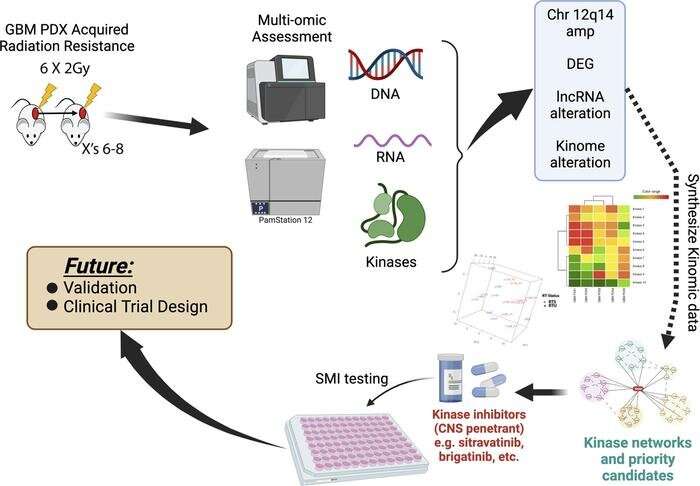
The University of Alabama at Birmingham Marnix E. Heersink School of Medicine’s Department of Radiation Oncology researchers have identified potential targets to help overcome therapy-resistant tumors in patients with glioblastoma, the most common and devastating form of primary brain cancer.
Christopher Willey, M.D., Ph.D., Hale-Stephens ROAR Endowed professor, recently published the research “An in vivo model of glioblastoma radiation resistance identifies long noncoding RNAs and targetable kinases” in the peer-reviewed journal JCI Insight with co-authors.
“This project is focused on a real clinical problem we face in treating glioblastoma and that is acquired therapeutic resistance,” Willey said. “Unfortunately, the tumor pretty much universally recurs, and the median survival is only 15 months from diagnosis.”
The current standard of care for glioblastoma is surgery, if possible, followed by radiation and chemotherapy. While there is much research on radiation resistance for glioblastoma, Willey says most tumor models used in studies have never actually seen therapy before.
“There is a lack of acquired therapeutic resistance models, particularly radiation, and we sought to improve upon that,” Willey said.
The new article explains how researchers used a patient-derived xenograft program for glioblastoma to generate some acquired radiation resistance models that they then profiled to try to identify potential pathways of resistance.
https://www.youtube.com/embed/dHhn7Fj6ACA?color=whiteChristopher Willey describes a panel of acquired radiation resistant GBM PDX and identifies potentially targetable transcriptomic (including lncRNA) and kinomic alterations. Credit: JCI Insight
Researchers were successful in generating phenotypically and molecularly diverse models of glioblastoma tumor recurrence, particularly related to radiation. They also identified alterations in long noncoding RNA transcripts in the acquired radiation-resistant patient-derived xenograft lines, which were associated with several gene expression signatures, suggesting that long noncoding RNA transcripts could potentially regulate pathways that lead to radiation resistance.
“And particularly important, kinomic profiling from these models reveals potential targets for therapeutic development for glioblastoma recurrence,” Willey said.
Amy Richardson, University of Alabama at Birmingham

